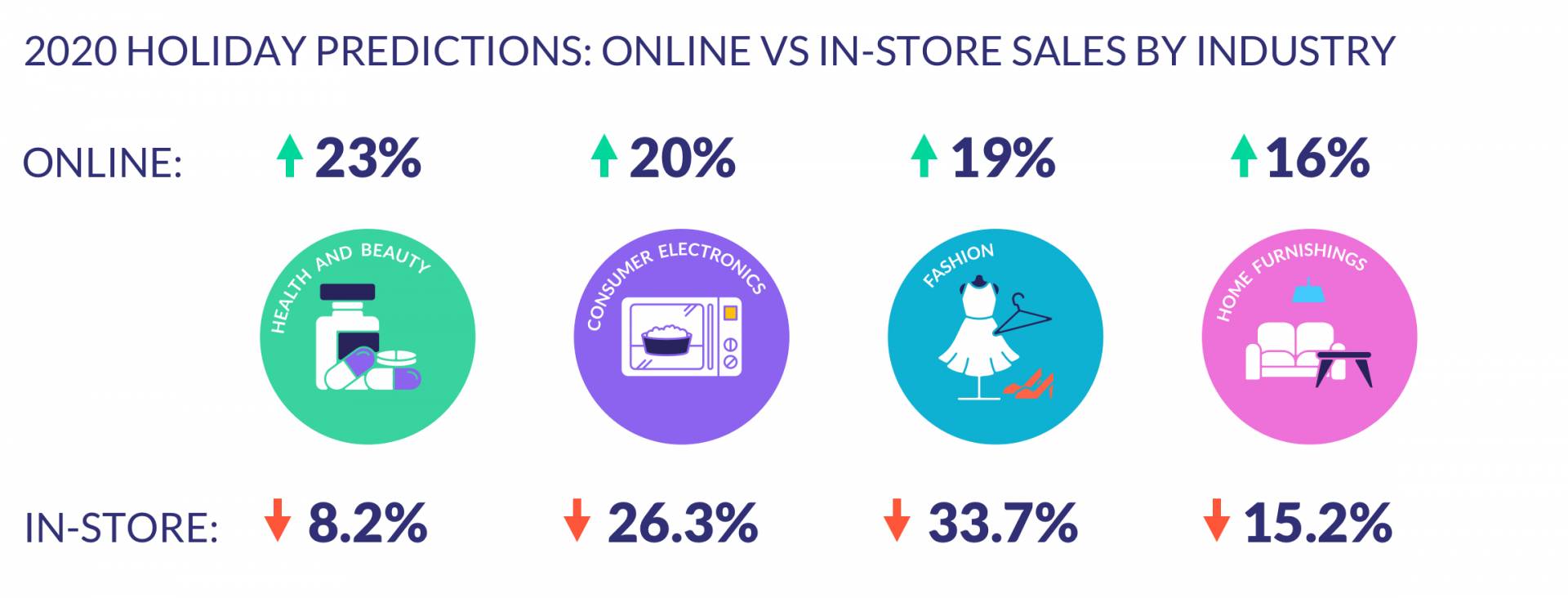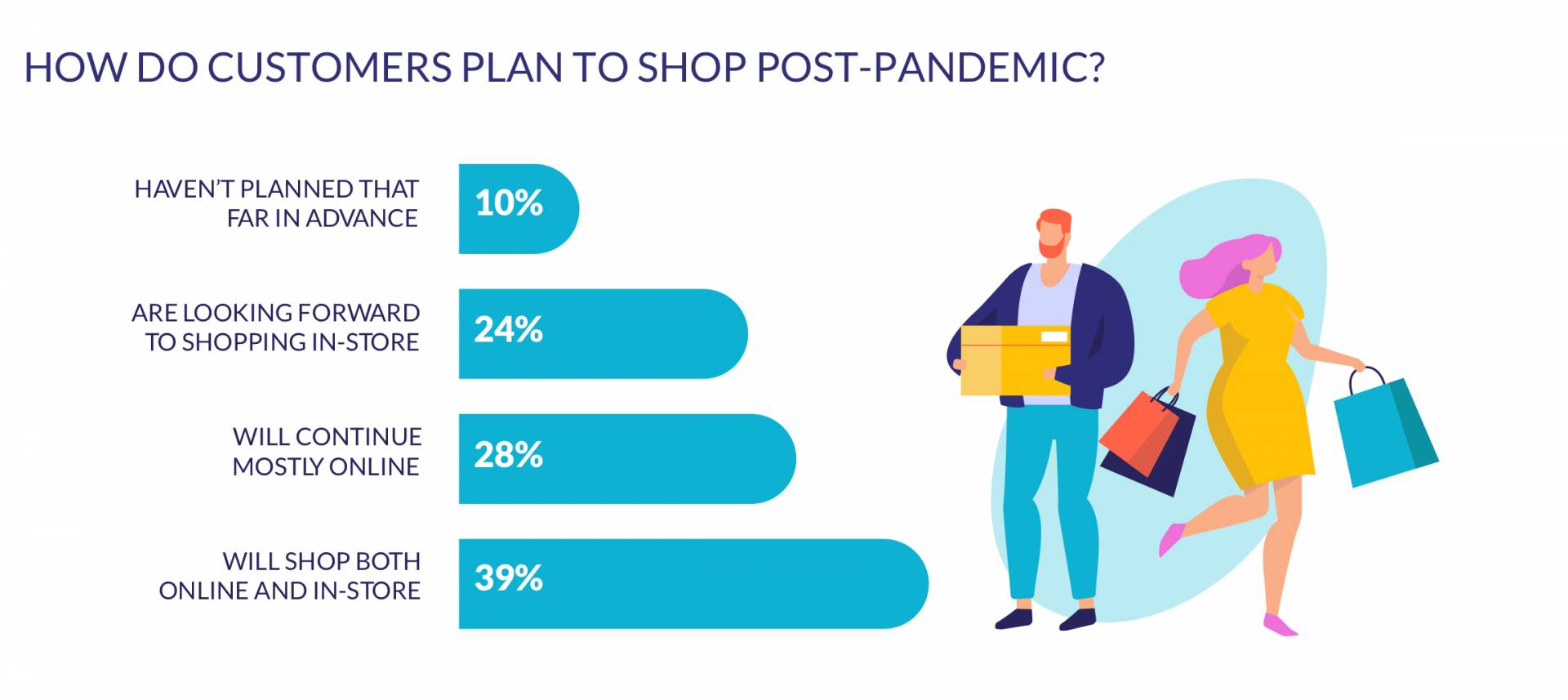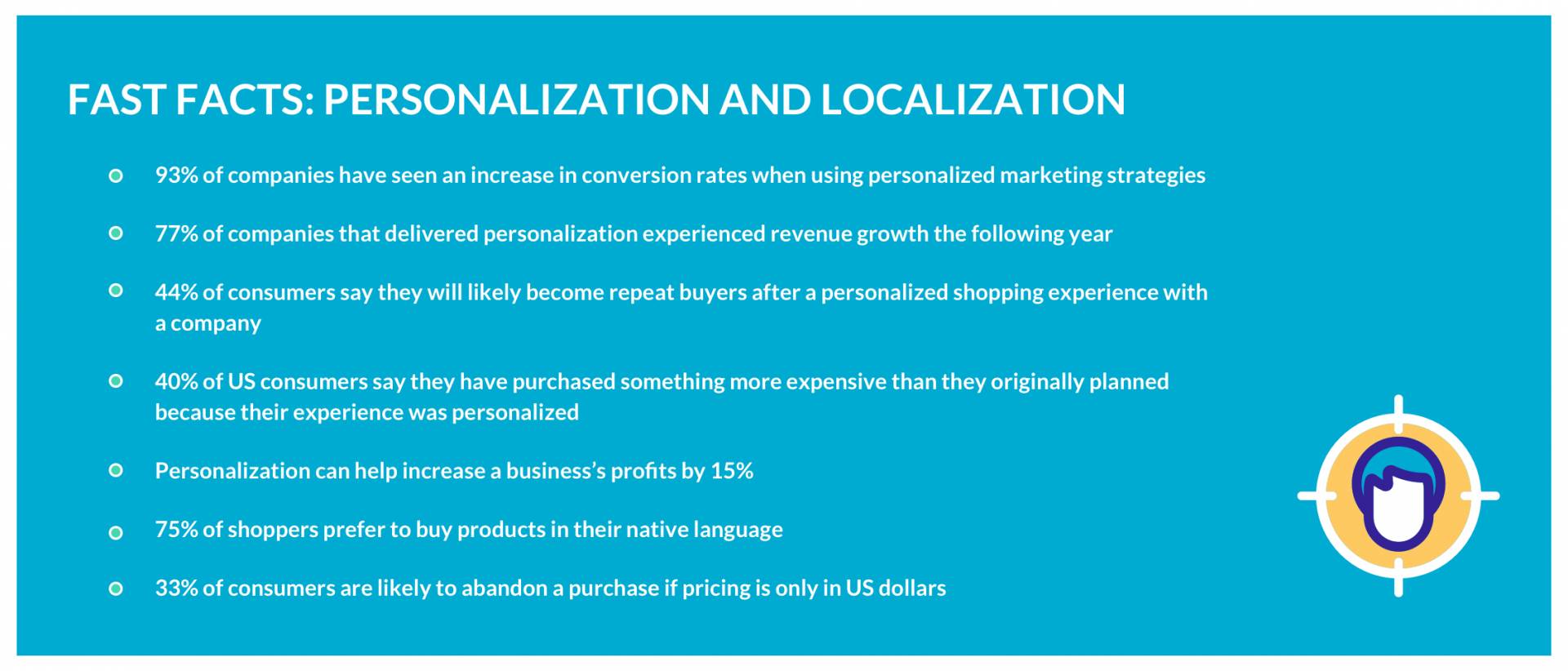Even before the coronavirus pandemic drove us all indoors (and online), ecommerce sales were on the rise. But COVID-19 has accelerated the growth of online shopping: 62% of American consumers shop online more now than before the outbreak. There’s a lot to learn about online shopping in the COVID era, and about the new technology trends that are driving ecommerce forward.
Ecommerce During COVID-19
It’s true that the economic impact of the pandemic has meant a decline in consumer spending. However, while total retail sales in the U.S. are expected to drop by 10.5% this year, ecommerce sales have grown in comparison to the rest of the industry and are actually expected to jump by 18%.
The 2020 holiday season is a case in point. While in-store Black Friday shopping declined by 52% year-on-year, digital sales in the U.S. are predicted to reach $189 billion over the holiday shopping period (November 1st to December 31st) – which would be a 33% increase year-on-year.
Ecommerce After COVID-19
This trend towards online shopping is expected to continue in the post-pandemic world. More than half of respondents in one survey say that COVID-19 has changed their relationship with technology, while 61% say they’ll spend more time online after the pandemic than before it began. In other words, the era of digital shopping looks like it’s here to stay.
Trends: New Tech
As more and more shopping begins to take place online, it’s important to keep an eye on up-and-coming ecommerce tools.
Digital wallets, or mobile payments (think Apple Pay), are one increasingly popular payment method to be aware of – especially if you sell to customers overseas. QR code payments are also gaining huge popularity. For example, 81.1% of smartphone users in China use mobile payments to shop online. And American consumers are also embracing this trend, however slowly: digital wallet usage jumped by 77% in North America between 2015 and 2018.
Voice assistants (think smart home speakers like the Amazon Alexa) are also changing the way that we make purchases online. Eight billion of these devices are predicted to be in use by 2023, up from 2.5 billion at the end of 2018. So why are voice assistants important for online merchants? Well, they’re not just for texting or quick Google searches anymore: One 2019 report found that 40% of consumers surveyed across the US, UK, Canada, India, and Australia had used voice technology to make online purchases. And COVID-19 could very well increase that percentage, since the number of people using voice assistant technology “several times a day or nearly every day” grew from 46% before the pandemic to 52% during the outbreak.
Outside the realm of payment methods, personalization and localization are making waves as important strategies for improving the customer experience. Personalization means tailoring product recommendations based on a user’s purchase history or browsing behavior. As it turns out, many customers are willing to share information about themselves in order to get a more personalized experience – 83%, in fact.
Localization is a little more technical: it means adapting your online store to better suit local markets. Details like translating content into local languages and pricing products in local currencies are all a part of this strategy, and it pays off: 42% of shoppers won’t even make a purchase in a language that’s not their own. Even if you’re not a huge multinational company, localization matters – 59% of consumers rarely or never buy from English-only sites, so simply offering translation options can have more of an impact on conversion rates than you’d expect.
Check out this comparison of translation softwares and consider integrating a localization platform, such as Centus, that could help you transform into a multilingual website.
This is just a sampling of the many ecommerce tools and strategies we can expect in the coming years. Given the huge numbers of ecommerce sales during the pandemic, it’s never too soon to read up on the trends.
See more of the stats and trends in the Website Builder Expert graphic ecommerce guide.















